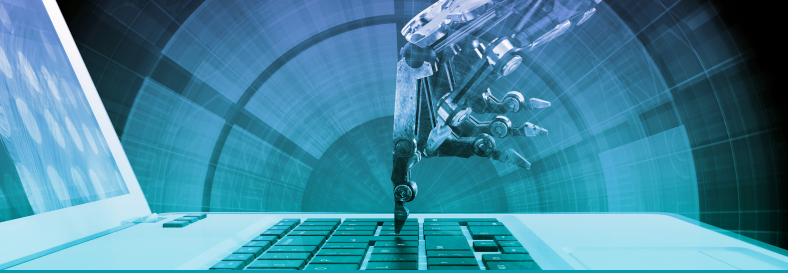HR Solutions Software is a thorough suite of tools intended to improve various human resource functions, such as recruitment, onboarding, and payroll management. By centralizing employee data and automating processes, it minimizes errors and boosts efficiency. For instance, automated tracking can streamline hiring, whereas data analytics aids in informed decision-making. Comprehending its features and benefits can greatly impact your organization’s productivity and employee engagement.
Let’s explore how to select the right software for your needs.
Key Takeaways
- HR Solutions Software streamlines and automates HR functions, enhancing organizational efficiency and reducing time spent on routine tasks.
- It centralizes employee data management, improving accuracy and accessibility while ensuring compliance with labor laws.
- Key features include applicant tracking, performance management, and learning management systems, all designed to enhance recruitment and employee development.
- Employees benefit from self-service portals for accessing information, improving engagement, and enriching their overall work experience.
- Businesses gain data-driven insights through built-in analytics, enabling informed decision-making and strategic HR initiatives.
What Is HR Solutions Software?
HR solutions software encompasses a range of applications designed to streamline and automate key human resources functions, which can improve efficiency in your organization.
These HR platforms provide tools for recruitment, onboarding, payroll, performance management, and compliance tracking. By centralizing employee data management, this software improves accessibility and accuracy while minimizing human error through automation.
For instance, human resources onboarding software can simplify the new hire process, allowing new employees to complete paperwork online. Furthermore, these systems often include self-service portals and analytics tools, empowering employees and enabling data-driven decision-making.
In the end, by automating routine tasks, HR solutions software frees up your HR teams to concentrate on strategic initiatives, ensuring compliance with labor laws and reducing the risk of penalties.
Key Features of HR Solutions Software
Organizations looking to improve their human resources capabilities will find that HR solutions software offers a variety of key features designed to streamline operations and improve overall efficiency.
A central component is the Human Resource Information System (HRIS), which centralizes employee data management and payroll processing.
Furthermore, ADP Applicant Tracking Systems (ATS) improve recruitment by facilitating job postings and CV screening.
Performance Management Software digitizes performance reviews, incorporating tools for goal-setting and feedback to support employee development.
Learning Management Systems (LMS) help track training progress and guarantee compliance with mandatory requirements.
Finally, built-in analytics tools provide insights into workforce performance and recruitment metrics, enabling data-driven decision-making that ultimately increases organizational effectiveness.
Benefits of HR Solutions Software for HR Departments
HR solutions software offers significant advantages for HR departments by streamlining administrative processes, enhancing recruitment efficiency, and improving data management.
With automated payroll and attendance tracking, you can reduce the time spent on routine tasks, allowing you to concentrate on strategic initiatives.
Furthermore, features like applicant tracking systems not only speed up hiring but likewise provide valuable insights for better decision-making and workforce planning.
Streamlined Administrative Processes
Although administrative tasks can often consume a significant portion of an HR department’s time, implementing HR solutions software can dramatically streamline these processes. This software automates routine functions like attendance tracking and payroll processing, freeing up valuable time for your team.
By centralizing employee data management, it improves accuracy and reduces human errors, ensuring compliance with labor laws.
In addition, streamlined onboarding processes help new hires acclimate quickly, boosting their productivity from the start.
Performance management tools within the software allow for real-time feedback and goal tracking, promoting employee engagement and accountability. Moreover, HR solutions software provides valuable analytics, enabling you to make informed, data-driven decisions that align with your organization’s goals and improve overall efficiency.
[embed]https://www.youtube.com/watch?v=-qI5ydBE6PQ[/embed]
Enhanced Recruitment Efficiency
In regards to improving recruitment efficiency, utilizing HR solutions software can transform the hiring process considerably. By implementing these tools, you can streamline various aspects of recruitment, making it faster and more effective.
Here are four key benefits:
- Automation: Automate job postings, resume screening, and interview scheduling, potentially reducing time-to-hire by up to 50%.
- Data Analytics: Utilize data to optimize job ad placements, ensuring you attract the most suitable candidates.
- Onboarding: Streamline onboarding by allowing new hires to complete paperwork electronically, easing administrative burdens.
- Communication Tools: Enhance candidate engagement through integrated communication features, improving the overall experience and increasing acceptance rates.
Improved Data Management
Effective recruitment is only one aspect of what HR solutions software can offer; improved data management is another significant benefit that can transform HR departments. By centralizing employee data, you can easily access, update, and maintain accurate records in one secure location, reducing discrepancies.
Automated data collection minimizes manual entry errors, letting you focus on strategic initiatives rather than administrative tasks. Advanced analytics tools provide insights into workforce trends, improving decision-making. Real-time updates guarantee compliance-related documentation is current, reducing the risk of penalties. Integration with other business systems streamlines data sharing and communication, promoting collaboration.
Feature Benefit Example Centralized Data Management Reduces discrepancies Single source of truth Automated Data Collection Minimizes manual errors Time-saving processes Advanced Analytics Informs strategic decisions Workforce trend analysis Real-Time Updates Guarantees compliance Current employee documentation System Integration Improves collaboration Seamless data sharingBenefits of HR Solutions Software for Employees
HR solutions software offers a range of benefits that greatly improve the employee experience within an organization.
With these tools, you can manage your own personal information effortlessly and enrich your daily work life.
Here are some key advantages:
- Self-Service Portals: Access your details, request time off, and view pay stubs independently.
- Improved Onboarding: New hires can integrate into the company more smoothly, boosting comfort and productivity from day one.
- Employee Engagement Tools: Participate in surveys and recognition programs that encourage a positive workplace culture.
- Performance Management Features: Set personal goals, receive real-time feedback, and track your progress, aligning your contributions with the organization’s objectives.
These features collectively enrich your overall work experience.
Benefits of HR Solutions Software for Businesses
Though many businesses face challenges in managing human resources effectively, leveraging HR solutions software can greatly streamline operations and improve productivity.
By automating routine administrative tasks, you can free up your HR team to focus on strategic initiatives, improving overall efficiency. Centralizing employee data not only enhances compliance with labor laws but also reduces the risk of penalties, promoting accountability.
Furthermore, the software simplifies recruitment and onboarding, allowing you to fill roles more quickly and improve the candidate experience. Employee self-service portals boost satisfaction by giving staff easy access to personal information and performance metrics.
Finally, the analytics and reporting features enable data-driven decision-making, which can lead to better employee engagement and productivity.
Types of HR Solutions Software
When considering HR solutions software, you’ll find two main categories: core HR systems and additional HR solutions.
Core HR systems, like HRIS and HRMS, focus on centralizing employee data, payroll, and performance management, whereas additional solutions, such as Applicant Tracking Systems and Learning Management Systems, address specific needs like recruitment and training.
Comprehending these types can help you choose the right software to streamline your HR processes effectively.
Core HR Systems
Core HR systems serve as the backbone of effective human resource management, integrating various functionalities to streamline processes and improve organizational efficiency.
These systems encompass crucial tools that help you manage your workforce effectively. Here are some key types of core HR systems:
- Human Resource Information Systems (HRIS): Centralize employee data management, payroll processing, and benefits administration.
- Human Resource Management Systems (HRMS): Offer extensive functionalities, including recruitment, performance evaluation, and HR analytics.
- Applicant Tracking Systems (ATS): Improve recruitment efficiency by streamlining job postings, interview scheduling, and CV screening.
- Payroll Software: Automates tracking of employee work hours and pay rates, ensuring compliance and accuracy.
Additional HR Solutions
In today’s dynamic workplace, several additional HR solutions software types can greatly improve your organization’s human resource management capabilities.
Human Resource Information Systems (HRIS) manage employee data, whereas Applicant Tracking Systems (ATS) streamline hiring by tracking applicants.
Payroll Software simplifies payroll processes, ensuring accuracy and compliance.
Learning Management Systems (LMS) centralize training, augmenting employee skills and meeting compliance needs.
Benefits Administration Software simplifies managing employee benefits, making enrollment and tracking easier.
Employee Engagement Software promotes communication through surveys and recognition tools, encouraging a positive culture.
Finally, Time and Attendance Software automates employee hours and time-off requests, reducing administrative burdens and minimizing payroll errors.
How to Choose HR Solutions Software
How do you determine the right HR solutions software for your organization? Start by aligning your HR vision with your overall business strategy, ensuring the software addresses your specific pain points.
Gather input from key stakeholders to define necessary features and functionalities. Next, research various HR software options, focusing on features relevant to your needs, like recruitment, payroll, and performance management.
Here’s a simple checklist to follow:
- Align HR vision with business strategy.
- Gather input from key stakeholders on features.
- Research available HR software options.
- Evaluate shortlisted software through demos and trials.
Finally, establish key performance indicators (KPIs) to measure the software’s effectiveness post-implementation.
This process will help you choose the best HR solutions for your business.
Implementing HR Solutions Software in Your Business
When you implement HR solutions software in your business, you can greatly streamline administrative tasks, allowing your HR team to concentrate on more strategic initiatives.
Automating processes like payroll, recruitment, and onboarding boosts efficiency, freeing up time for higher-value activities. By centralizing employee data management, you improve accessibility and facilitate real-time updates, which increases collaboration across departments.
Furthermore, the software helps guarantee compliance with labor laws by tracking necessary documentation and deadlines, minimizing the risk of penalties.
With performance management tools, you can support goal setting and feedback, driving both productivity and engagement.
Many solutions are cloud-based, offering mobility and accessibility as well as reducing the need for hardware investments, leading to significant cost savings for your business.
Exploring Free Trials of HR Solutions Software
Are you considering HR solutions software but unsure if it’s the right fit for your organization? Free trials are a valuable way to explore these tools without commitment.
During the trial, you can:
- Assess the software’s functionalities, like payroll processing and onboarding.
- Evaluate time and cost savings by streamlining HR tasks.
- Test integration capabilities with your existing systems to guarantee compatibility.
- Gather feedback from employees on usability and effectiveness.
Frequently Asked Questions
What Are the Benefits of HR Software?
HR software offers numerous benefits that streamline your HR processes. It automates tasks like payroll and attendance, freeing up time for strategic initiatives.
With features like Applicant Tracking Systems, it improves recruitment efficiency, enhancing candidate experiences. Centralizing employee data helps guarantee compliance with labor laws and reduces manual errors.
Self-service portals allow employees easy access to their information, boosting engagement.
Moreover, analytics provided by HR software support data-driven decision-making, optimizing workforce management.
What Are HR Solutions?
HR solutions are digital tools designed to optimize human resources processes. They automate tasks like recruitment, onboarding, payroll, and performance management, making your HR operations more efficient.
By centralizing employee data, these solutions improve compliance with labor laws and minimize errors. Moreover, they enable better communication across departments and provide analytics for informed decision-making.
What Are the Three Main Types of HR Software Solutions?
The three main types of HR software solutions are Human Resource Information Systems (HRIS), Human Resource Management Systems (HRMS), and Applicant Tracking Systems (ATS).
HRIS focuses on employee data management and payroll, whereas HRMS integrates various HR functions like recruitment and performance management.
[embed]https://www.youtube.com/watch?v=4EM14X5M_gY[/embed]
ATS streamlines the hiring process by automating job postings and candidate screening.
[embed]https://www.youtube.com/watch?v=zAazwWgGFeM[/embed]
Each system serves distinct HR needs, allowing you to choose the best option based on your organization’s goals.
What Is HR Software?
HR software includes various applications designed to streamline human resource functions. It automates tasks like payroll processing, attendance tracking, and compliance management, allowing you to save time and reduce errors.
Common types of HR software are Human Resource Information Systems (HRIS), Applicant Tracking Systems (ATS), and performance management tools.
Conclusion
In conclusion, HR Solutions Software is crucial for modern businesses looking to streamline their human resource processes.
By improving recruitment, onboarding, and payroll management, it helps HR departments operate more efficiently during the enhancement of employee experiences. The benefits extend beyond HR teams, positively impacting overall business performance through better data management and compliance. By carefully selecting and implementing the right software, you can greatly improve productivity and focus on strategic initiatives that promote organizational growth.
Image via Google Gemini
Disclaimer: This story is auto-aggregated by a computer program and has not been created or edited by finopulse.
Publisher: Source link







